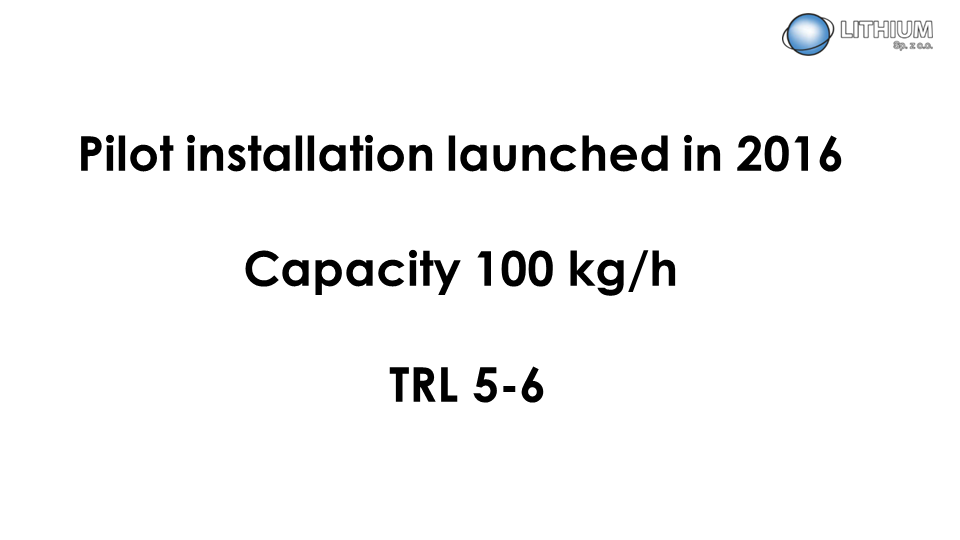Lithium – Recycling of Li-ion batteries from electric equipment

















The technology of mechanical processing of Li – ion batteries scrap was tested in a pilot installation with a processing capacity of approx. 100 kg/h. More than 30 tons of this material were processed during the pilot operation. Many hours of operation of the installation proved that the process can be carried out safely, both with respect to the safety of the work environment and fire safety.
The main value of the developed method of mechanical processing of spent lithium-ion batteries is the safety of this process. All products, and in particular black mass, are free from any features which may lead to self-ignition and self-explosion.
The technology provides possibility for separation of the basic components of Li – ion cells into individual material fractions: plastic, steel, copper, aluminium and fraction of electrode materials – black mass. High recovery rates of individual material concentrates can be reached, e.g. Ni, Co, Mn are recovered from the black mass fraction at 90%.
Simplicity and flexibility of the technology, low capital and operating costs can lead to building of a network of regional processing plants.
Our philosophy:
- Do not carry hazardous battery waste around Europe to remote recycling sites.
Transportation of batteries for recycling requires application of additional safety measures: containers, sand, and in the result the effective mass of the battery does not exceed 60% of the mass of the entire shipment, while bringing also additional risk and danger of ignition and explosion. - Recycling of batteries with application of mechanical and thermal methods should be conducted as close as possible to the place where the waste stream is generated, providing possibilities for safe „slimming down” of the batteries from less valuable fractions which can be easily sold on local markets. The most valuable black mass (Co, Ni, Mn, C), constituting about 40% of the original weight of battery waste, can be then treated in “the most appropriate way”, i.e. it can be either sold to the customers providing best offers or directed to the next hydrometallurgical process that produces advanced metal salts and pure graphite.


